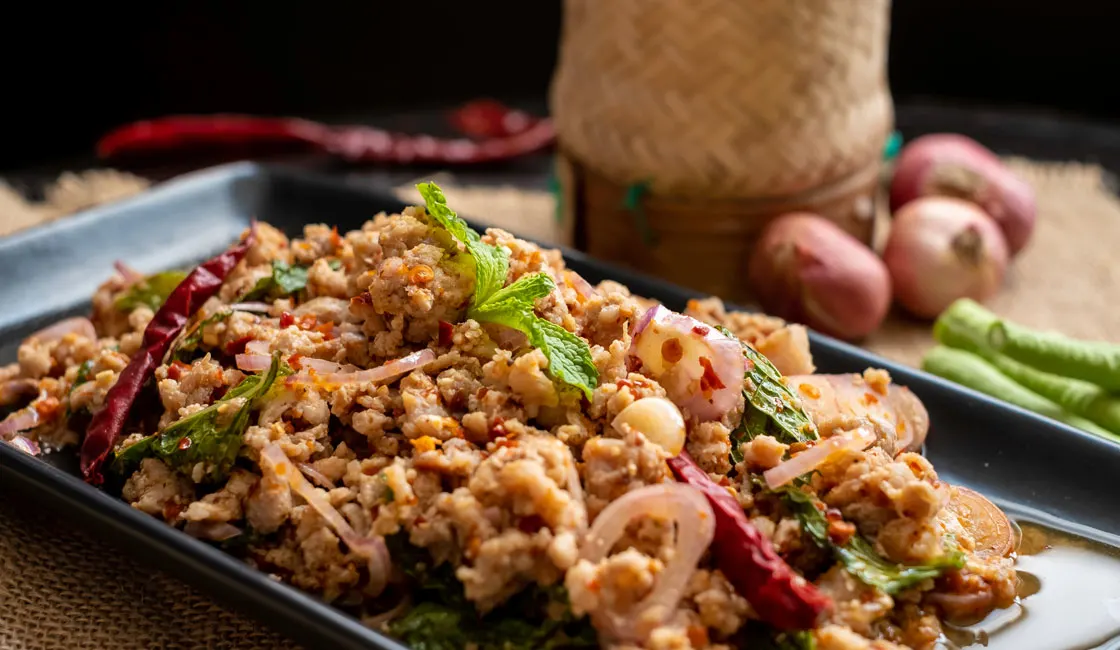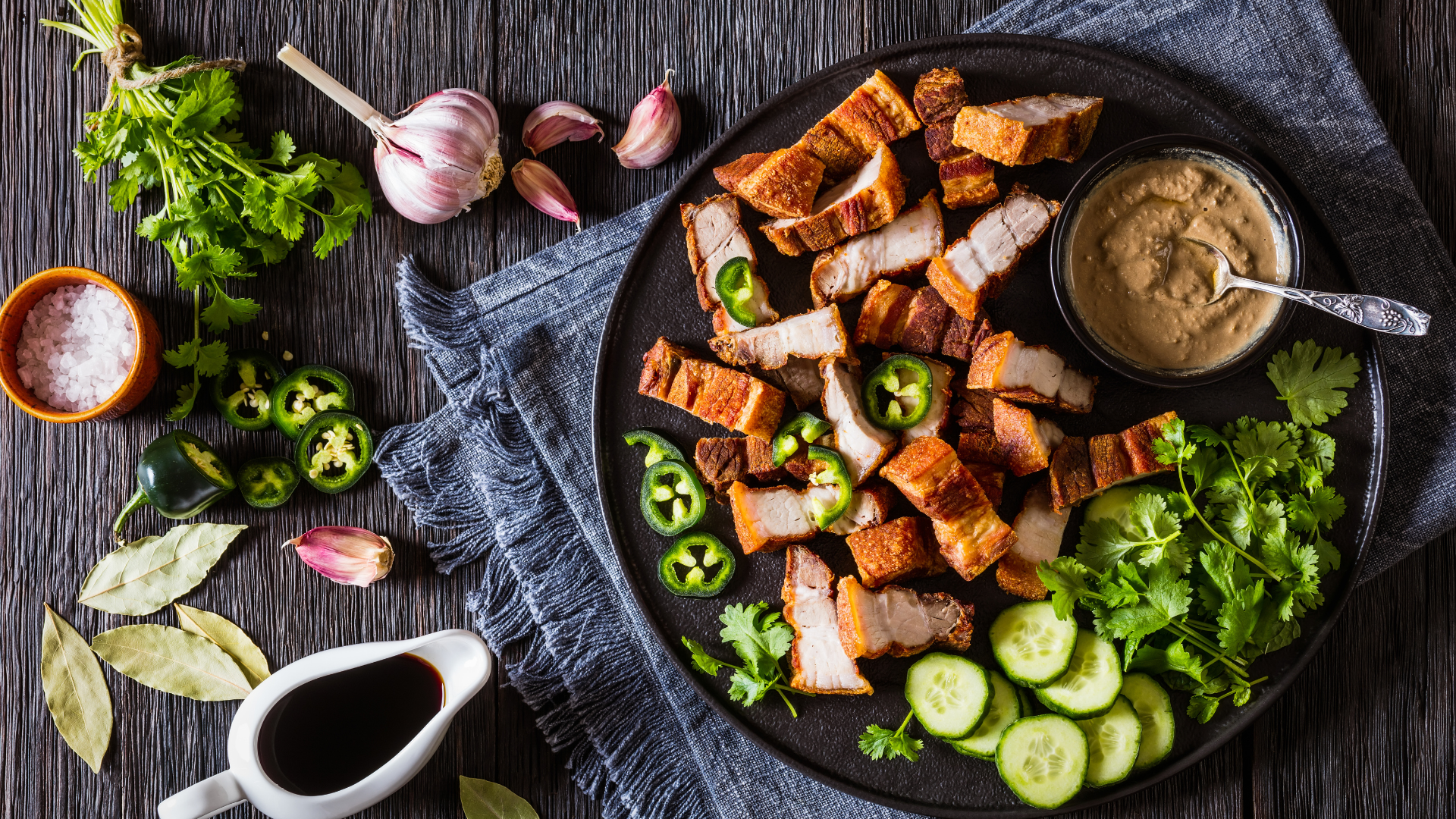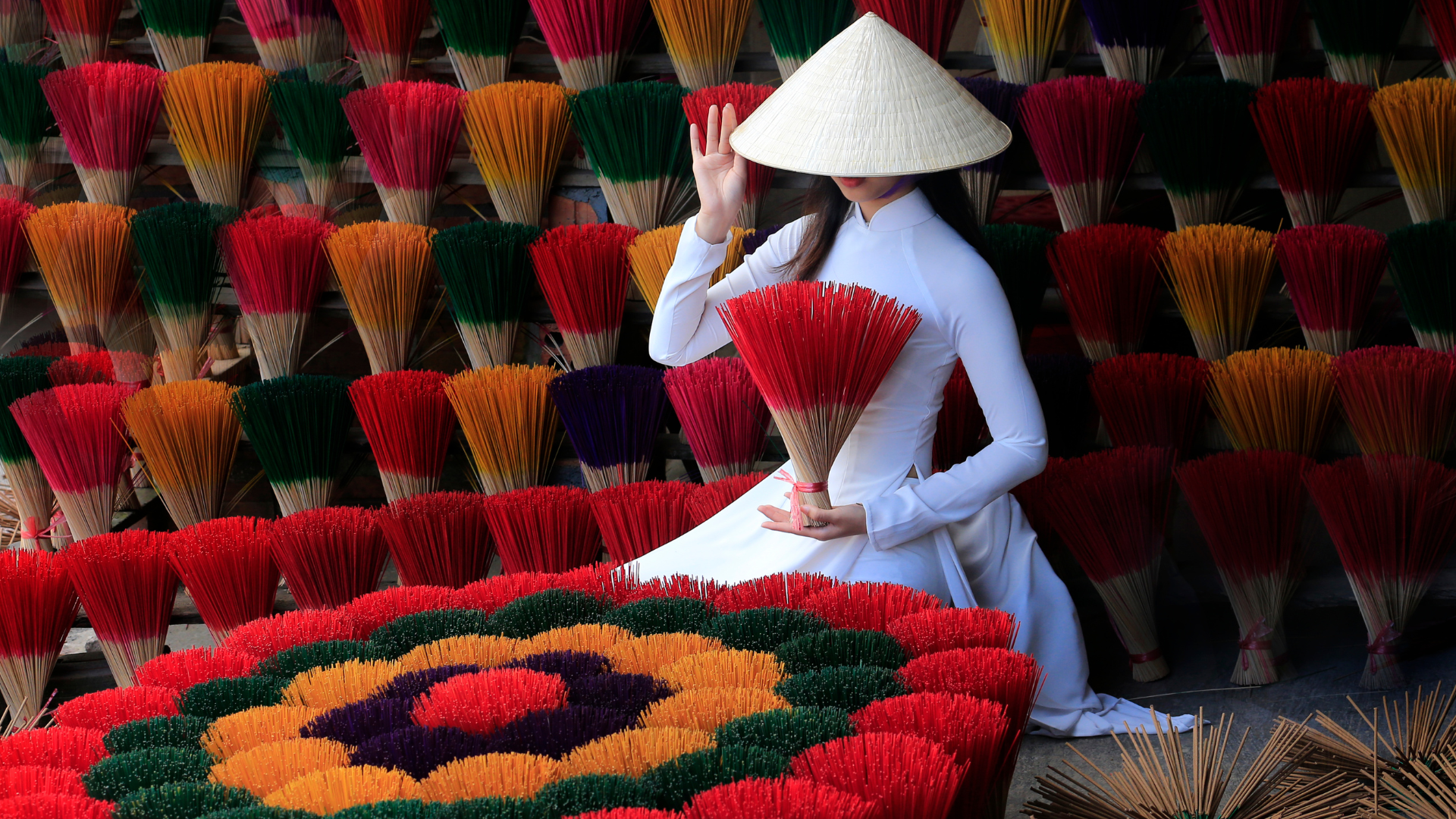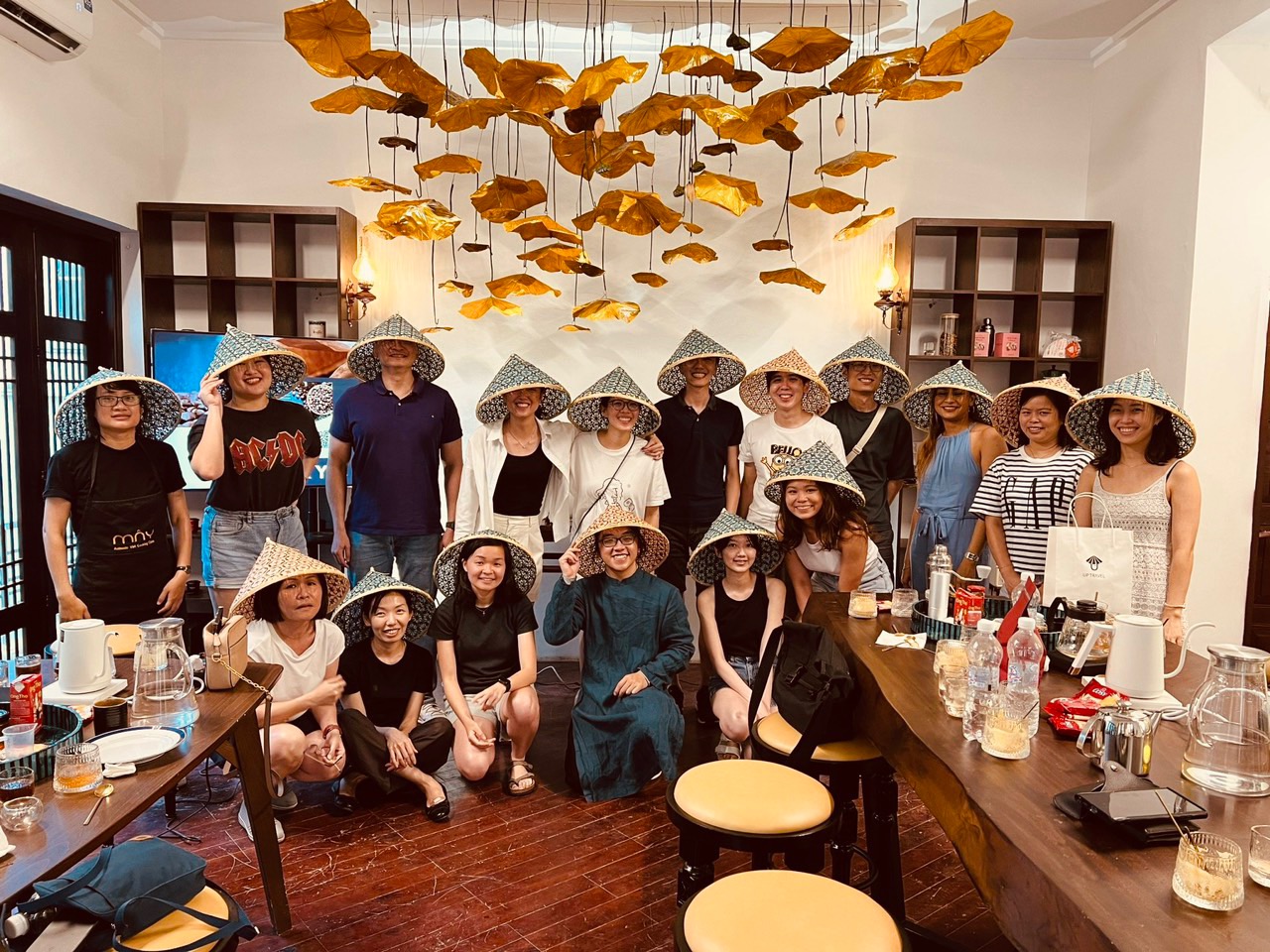A Culinary Journey Through Thailand: Exploring The Iconic Dishes Of Tom Yum, Pad Thai, And Green Curry
22-08-2024
Thailand, often referred to as the Land of Smiles, is a treasure trove of culinary delights that have captured the hearts and taste buds of food enthusiasts worldwide. Among the myriad of dishes that define Thai cuisine, Tom Yum, Pad Thai, and Green Curry stand out as iconic representations of the country's rich culinary heritage. This blog post takes you on a gastronomic journey to explore these famous dishes, delving into their origins, ingredients, and the cultural significance that makes them beloved both locally and internationally.
Origins And History
Tom Yum, also known as Tom Yam, is a quintessential Thai soup that epitomizes the balance of flavors for which Thai cuisine is renowned. The name "Tom Yum" derives from two Thai words: "Tom" refers to the boiling process, while "Yum" denotes a spicy and sour salad. This soup is believed to have originated in Central Thailand, where the abundance of rivers and waterways provided a rich source of freshwater prawns, a key ingredient in traditional Tom Yum Goong (prawn Tom Yum).
Ingredients And Preparation
The soul of Tom Yum lies in its aromatic broth, which is a harmonious blend of spicy, sour, salty, and slightly sweet flavors. The essential ingredients include:
The preparation of Tom Yum involves boiling the aromatic herbs and spices to extract their flavors, creating a robust and fragrant broth. The prawns or chosen protein are then added, cooked until tender, and the soup is finished with fresh lime juice and chopped cilantro.
Cultural Significance
Tom Yum is more than just a dish; it is a reflection of Thai culture and the importance of balance and harmony in their cuisine. It is often enjoyed as a starter or a main course, providing a warm, comforting experience that embodies the essence of Thai hospitality. The soup's vibrant flavors also make it a popular choice for festive occasions and gatherings, symbolizing unity and the joy of sharing a meal with loved ones.

Origins And History
Pad Thai, a stir-fried noodle dish, has a fascinating history that intertwines with Thailand's national identity. The dish was popularized during the 1930s and 1940s by Prime Minister Plaek Phibunsongkhram, who aimed to promote Thai nationalism and reduce rice consumption during a period of economic hardship. By encouraging the consumption of noodles, which were made from rice but had a longer shelf life, Pad Thai became a symbol of modernization and Thai ingenuity.
Ingredients And Preparation
Pad Thai is characterized by its unique combination of flavors and textures, achieved through a medley of ingredients that include:
The preparation of Pad Thai involves stir-frying the rice noodles with the proteins, eggs, and sauce ingredients until everything is well-coated and infused with the rich, tangy flavors. The dish is then garnished with fresh herbs, bean sprouts, and crushed peanuts, offering a delightful blend of tastes and textures.
Cultural Significance
Pad Thai's rise to fame both within Thailand and internationally is a testament to its appeal and versatility. It is a staple street food, loved by locals and tourists alike for its quick preparation and delectable taste. Beyond being a culinary delight, Pad Thai represents the resilience and adaptability of Thai culture, transforming simple ingredients into a dish that has become synonymous with Thai cuisine.

Origins And History
Green Curry, or Gaeng Keow Wan, is another iconic dish that highlights the complexity and depth of Thai cuisine. This dish traces its origins to Central Thailand and is known for its rich, creamy consistency and vibrant green color, which comes from the green chilies used in the curry paste. Green Curry has been a part of Thai culinary tradition for centuries, evolving with regional variations and the influence of local ingredients.
Ingredients And Preparation
The heart of Green Curry lies in its luscious, aromatic curry paste and creamy coconut milk base. Key ingredients include:
The preparation of Green Curry involves sautéing the curry paste to release its aromatic oils, then simmering it with coconut milk and the chosen protein until tender. Vegetables are added towards the end to retain their texture, and the curry is finished with Thai basil and a squeeze of lime for freshness.
Cultural Significance
Green Curry is a cherished dish in Thai homes, frequently enjoyed during special events and family gatherings. Its rich, complex flavors and comforting warmth make it a favorite during cooler months. Green Curry also embodies the Thai principle of balancing flavors, with its harmonious blend of spicy, sweet, and savory elements.

The global popularity of Tom Yum, Pad Thai, and Green Curry highlights the universal appeal of Thai cuisine, which is celebrated for its intricate balance of flavors and use of fresh, aromatic ingredients. These dishes have transcended cultural boundaries, finding their way into the menus of restaurants worldwide and becoming beloved comfort foods for many.
Cooking Thai Dishes At Home
For those who wish to bring a taste of Thailand into their own kitchens, cooking Tom Yum, Pad Thai, and Green Curry at home can be a rewarding experience. Here are some tips to get started:
Tom Yum Tips:
Pad Thai Tips:
Green Curry Tips:
All three dishes can be customized to cater to dietary preferences and availability of ingredients, making them versatile additions to any culinary repertoire.
Tom Yum, Pad Thai, and Green Curry are more than just dishes; they are cultural ambassadors that offer a glimpse into the heart of Thai cuisine. The essence of Thai culinary artistry is captured in their rich histories, diverse flavors, and the precise balance of ingredients. Whether enjoyed on the bustling streets of Bangkok or recreated in your own kitchen, these iconic dishes provide a delicious journey through Thailand's vibrant food culture. So, the next time you crave an exotic culinary adventure, let the flavors of Tom Yum, Pad Thai, and Green Curry transport you to the Land of Smiles, where each bite narrates a tale of tradition, creativity, and the pleasure of good food.
Tom Yum: A Symphony Of Flavors
Origins And History
Tom Yum, also known as Tom Yam, is a quintessential Thai soup that epitomizes the balance of flavors for which Thai cuisine is renowned. The name "Tom Yum" derives from two Thai words: "Tom" refers to the boiling process, while "Yum" denotes a spicy and sour salad. This soup is believed to have originated in Central Thailand, where the abundance of rivers and waterways provided a rich source of freshwater prawns, a key ingredient in traditional Tom Yum Goong (prawn Tom Yum).
Ingredients And Preparation
The soul of Tom Yum lies in its aromatic broth, which is a harmonious blend of spicy, sour, salty, and slightly sweet flavors. The essential ingredients include:
- Lemongrass: Provides a citrusy aroma and fresh flavor.
- Galangal: Adds a sharp, slightly peppery undertone.
- Kaffir Lime Leaves: Infuses a fragrant, citrusy scent.
- Bird's Eye Chilies: Contributes to the soup's spiciness.
- Fish Sauce: Imparts a salty, umami depth.
- Lime Juice: Adds the crucial sour element.
- Prawns (or other proteins like chicken or tofu): Offer a succulent texture and rich taste.
- Mushrooms: Enhance the soup's earthy flavor.
The preparation of Tom Yum involves boiling the aromatic herbs and spices to extract their flavors, creating a robust and fragrant broth. The prawns or chosen protein are then added, cooked until tender, and the soup is finished with fresh lime juice and chopped cilantro.
Cultural Significance
Tom Yum is more than just a dish; it is a reflection of Thai culture and the importance of balance and harmony in their cuisine. It is often enjoyed as a starter or a main course, providing a warm, comforting experience that embodies the essence of Thai hospitality. The soup's vibrant flavors also make it a popular choice for festive occasions and gatherings, symbolizing unity and the joy of sharing a meal with loved ones.

Pad Thai: Thailand's Noodle Delight
Origins And History
Pad Thai, a stir-fried noodle dish, has a fascinating history that intertwines with Thailand's national identity. The dish was popularized during the 1930s and 1940s by Prime Minister Plaek Phibunsongkhram, who aimed to promote Thai nationalism and reduce rice consumption during a period of economic hardship. By encouraging the consumption of noodles, which were made from rice but had a longer shelf life, Pad Thai became a symbol of modernization and Thai ingenuity.
Ingredients And Preparation
Pad Thai is characterized by its unique combination of flavors and textures, achieved through a medley of ingredients that include:
- Rice Noodles: The foundation of the dish, providing a chewy and satisfying base.
- Eggs: Scrambled into the noodles, adding richness.
- Tofu or Shrimp: Common protein choices that absorb the dish's flavors.
- Bean Sprouts and Scallions: Offer a fresh, crunchy contrast.
- Tamarind Paste: Provides a tangy, slightly sweet flavor.
- Fish Sauce: Adds a salty, umami depth.
- Palm Sugar: Balances the dish with its sweetness.
- Peanuts: Crushed and sprinkled on top for a nutty, crunchy texture.
- Lime Wedges: Served on the side for an extra burst of acidity.
The preparation of Pad Thai involves stir-frying the rice noodles with the proteins, eggs, and sauce ingredients until everything is well-coated and infused with the rich, tangy flavors. The dish is then garnished with fresh herbs, bean sprouts, and crushed peanuts, offering a delightful blend of tastes and textures.
Cultural Significance
Pad Thai's rise to fame both within Thailand and internationally is a testament to its appeal and versatility. It is a staple street food, loved by locals and tourists alike for its quick preparation and delectable taste. Beyond being a culinary delight, Pad Thai represents the resilience and adaptability of Thai culture, transforming simple ingredients into a dish that has become synonymous with Thai cuisine.

Green Curry: A Taste Of Thai Tradition
Origins And History
Green Curry, or Gaeng Keow Wan, is another iconic dish that highlights the complexity and depth of Thai cuisine. This dish traces its origins to Central Thailand and is known for its rich, creamy consistency and vibrant green color, which comes from the green chilies used in the curry paste. Green Curry has been a part of Thai culinary tradition for centuries, evolving with regional variations and the influence of local ingredients.
Ingredients And Preparation
The heart of Green Curry lies in its luscious, aromatic curry paste and creamy coconut milk base. Key ingredients include:
- Green Chilies: Provide the curry's distinctive color and heat.
- Coconut Milk: Creates a rich, creamy texture and balances the spice.
- Thai Basil: Adds a fresh, slightly peppery flavor.
- Galangal and Lemongrass: Infuse the curry with fragrant, citrusy notes.
- Kaffir Lime Leaves: Enhance the aroma and add a citrusy undertone.
- Fish Sauce: Contributes a salty, umami depth.
- Palm Sugar: Adds a touch of sweetness to balance the flavors.
- Chicken, Beef, or Tofu: Common proteins that absorb the curry's flavors.
- Eggplant and Bamboo Shoots: Traditional vegetables that add texture and flavor.
The preparation of Green Curry involves sautéing the curry paste to release its aromatic oils, then simmering it with coconut milk and the chosen protein until tender. Vegetables are added towards the end to retain their texture, and the curry is finished with Thai basil and a squeeze of lime for freshness.
Cultural Significance
Green Curry is a cherished dish in Thai homes, frequently enjoyed during special events and family gatherings. Its rich, complex flavors and comforting warmth make it a favorite during cooler months. Green Curry also embodies the Thai principle of balancing flavors, with its harmonious blend of spicy, sweet, and savory elements.

The Global Appeal Of Thai Cuisine
The global popularity of Tom Yum, Pad Thai, and Green Curry highlights the universal appeal of Thai cuisine, which is celebrated for its intricate balance of flavors and use of fresh, aromatic ingredients. These dishes have transcended cultural boundaries, finding their way into the menus of restaurants worldwide and becoming beloved comfort foods for many.
Cooking Thai Dishes At Home
For those who wish to bring a taste of Thailand into their own kitchens, cooking Tom Yum, Pad Thai, and Green Curry at home can be a rewarding experience. Here are some tips to get started:
Tom Yum Tips:
- Use fresh ingredients whenever possible to achieve the best flavor.
- You can control the spiciness by adjusting the quantity of chilies used.
- Experiment with different proteins, such as chicken, fish, or tofu, to suit your preference.
Pad Thai Tips:
- Soak the rice noodles in warm water before cooking to ensure they have the right texture.
- Balance the sweet, sour, and salty elements of the sauce to suit your taste.
- Include a mix of vegetables to enhance both the color and nutritional value.
Green Curry Tips:
- Make your own curry paste for the freshest, most vibrant flavors.
- Use full-fat coconut milk for a richer, creamier texture.
- Adjust the heat by adding more or fewer green chilies to the curry paste.
All three dishes can be customized to cater to dietary preferences and availability of ingredients, making them versatile additions to any culinary repertoire.
Conclusion
Tom Yum, Pad Thai, and Green Curry are more than just dishes; they are cultural ambassadors that offer a glimpse into the heart of Thai cuisine. The essence of Thai culinary artistry is captured in their rich histories, diverse flavors, and the precise balance of ingredients. Whether enjoyed on the bustling streets of Bangkok or recreated in your own kitchen, these iconic dishes provide a delicious journey through Thailand's vibrant food culture. So, the next time you crave an exotic culinary adventure, let the flavors of Tom Yum, Pad Thai, and Green Curry transport you to the Land of Smiles, where each bite narrates a tale of tradition, creativity, and the pleasure of good food.

How to Choose the Best Shore Excursion Tour Package: A Practical Guide for Cruise Passengers

How Not to Be Late for Your Cruise: A Complete Guide for Shore Excursion Travelers in Vietnam & Thailand

Top 10 Most Beautiful Islands in Southeast Asia for Beach Lovers

The Rise of Experiential Tourism: Travelers Now Prefer Direct Immersion Over Traditional Sightseeing

Vietnam’s Tourism Surge in 2024: Driving Growth and Innovation in the Post-Recovery Phase

A Culinary Journey Through Thailand: Exploring The Iconic Dishes Of Tom Yum, Pad Thai, And Green Curry

A Culinary Journey Through Laos: Traditional Dishes Larb, Khao Niaw, And Tam Mak Hoong

Discovering Cambodia’s Culinary Treasures: Amok, Bai Sach Chrouk, And Samlor Korko

The Timeless Elegance of Áo Dài Việt Nam

Discovering Cambodia’s Culinary Treasures: Amok, Bai Sach Chrouk, And Samlor Korko

Su Quan Roastery Wins Traveler’s Choice Award 2024: A Journey of Excellence in Coffee Craftsmanship

Festivals in Laos: A Celebration of Culture and Traditions

Experience Laos at Its Finest: A Comprehensive Seasonal Travel Guide

A Guide to Transportation in Cambodia: Navigating the Kingdom of Wonder

Seasonal Guide to Cambodia: When to Go for the Best Experience

Exploring Transportation Options in Thailand: Your Ultimate Guide

Visa And Entry Requirements For Traveling Thailand

Best Time To Visit Viet Nam

A Culinary Journey Through Thailand: Exploring The Iconic Dishes Of Tom Yum, Pad Thai, And Green Curry

Discovering Cambodia’s Culinary Treasures: Amok, Bai Sach Chrouk, And Samlor Korko

A Culinary Journey Through Laos: Traditional Dishes Larb, Khao Niaw, And Tam Mak Hoong

The Timeless Elegance of Áo Dài Việt Nam

Traveling to Thailand: Navigating the Weather and Essential Preparations

Traditional Festivals in Cambodia: A Window into Culture and Spiritual Heritage

Exploring the Weather in Laos: What to Expect and How to Prepare

A Comprehensive Guide to Vietnam’s Weather and Travel Preparation

Exploring the Heart of Laos: A Journey Through Culture, Nature, and Heritage

Unveiling the Hidden Gems of Laos: A Journey Off the Beaten Path

A Guide to Transportation in Cambodia: Navigating the Kingdom of Wonder

Seasonal Guide to Cambodia: When to Go for the Best Experience

Exploring Transportation Options in Thailand: Your Ultimate Guide

Visa And Entry Requirements For Traveling Thailand

Transportation in Vietnam: A Comprehensive Guide

Visa And Entry Requirements For Traveling To Vietnam

Best Time To Visit Viet Nam
Subscribe for Insights
Enjoy updates, inspiration, and travel tips sent right to your inbox














